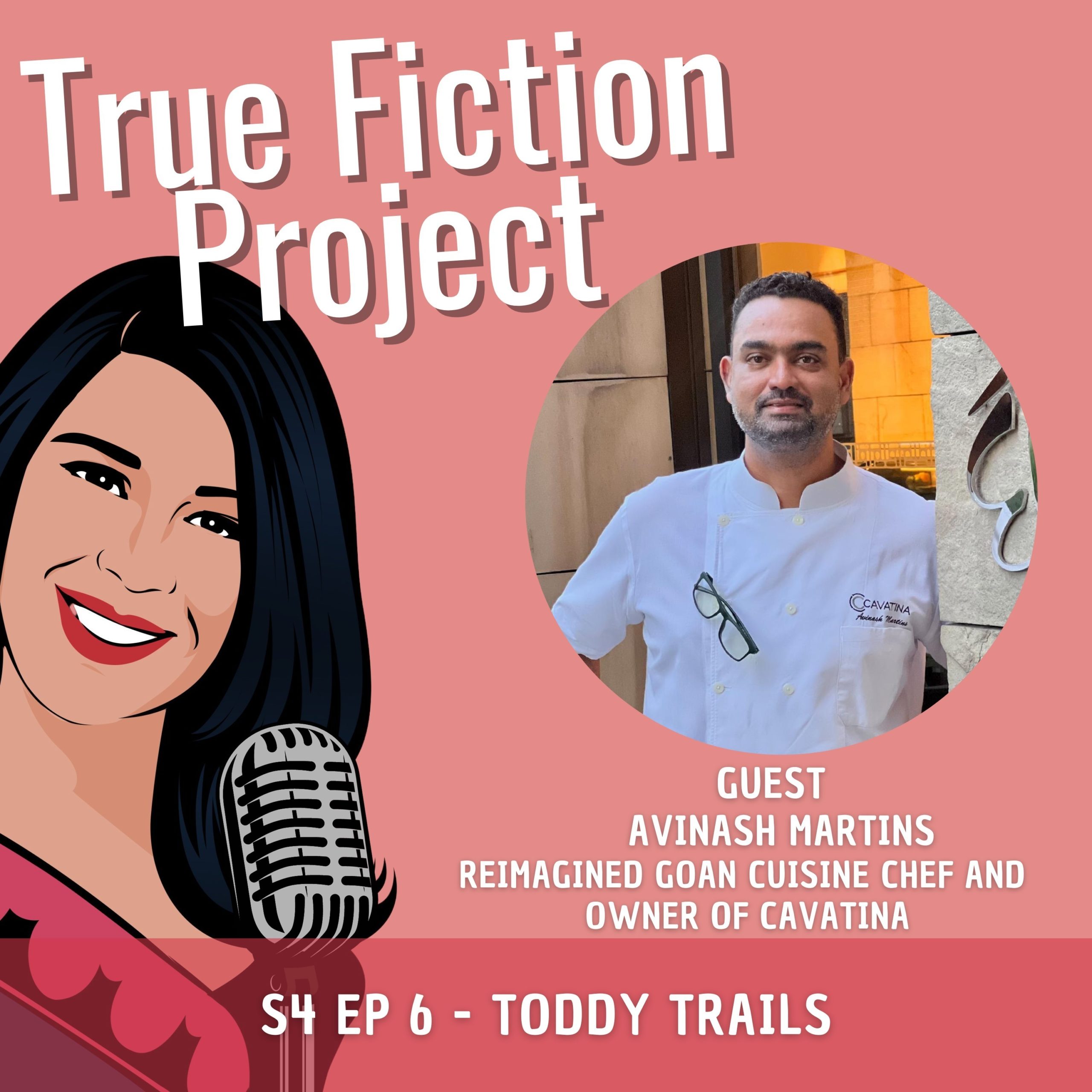Welcome back to another episode of the True Fiction Project Podcast. Today we feature Chef Avanish Martins. Avanish discusses how his restaurant, Cavatina, came to be and how he made the decision to focus on Goan cuisine. He discusses what “toddy trappers” are and why their skill is so essential to Goan food. Avinash describes how he tells stories through his cuisine and the beautiful way he ties the culture in by plating his food. We learn how the coconut and tree are used in the Goa Culture, and how Pader Pader Ponk Ponk was used to wake up the town. Toddy Trails the fiction piece from this episode takes us along the journey of a local baker who’s yeast has been ruined, risking a critical order he needed to fill. A friend encourages him to use toddy to replace the yeast, and after many attempts he nails down a successful recipe, only to have his rolls of bread stolen. Tune in to hear how the story ends!
IN THIS EPISODE:
- [2:38] Avinash introduces himself and talks about how he grew up.
- [3:34] How did Avinash’s restaurant, Cavatina, come to be?
- [6:03] What are “toddy tappers” and how does Avinash utilize it in his cooking?
- [11:28] Why does Feni get a bad rap?
- [12:50] How does Avinash’s cuisine differ from other Goan cuisine that is found in other restaurants?
- [13:46] What is a Chitari artist and how is their artwork represented on Avinash’s table?
- [18:09] Where did the roots of Goan cuisine originate from?
- [19:41] How can those of us outside of South Goa and India get to explore and experiment with Avinash’s cuisine?
- [22:31] Is there one particular kind of ingredient that you would say is quintessentially Goan that we don’t know about?
- [24:58] What did Pader Pader Ponk Ponk represent?
- [28:13] We hear the short story Toddy Tails written by Reenita Hora
KEY TAKEAWAYS:
- [8:35] Toddy is at risk of not being harvested in Goa due to the next generation not wanting to work the dangerous job of harvesting toddy. If there is no toddy, the product doesn’t exist, you cannot make it with anything else.
- [13:19] Avinash has experienced many parts of the world, and has decided that he will feature his Goan cuisine as Local Heart, Global Food. The food is genuine Goan good, with flair from other parts of the world.
- [22:40] The most important ingredient in Goan cuisine would be coconut. Coconut in all forms is a versatile element in Goan cooking. There is nothing of the coconut that goes to waste including the tree itself. It can be used for rafters of a roof, the leaves make beautiful shade nets, the spikes can be used as brooms, the husk is used to make ropes, and more!
Fiction Credits:
Excerpt written by: Reenita Hora
Excerpt narrated by using AI
BIO:
Chef Avinash Martins has got the humble Goan cuisine to an international level with farm to table practices and traditional cooking methods but presented it in a modern flair
Chef Avinash Martins’ Instagram
Chef Avinash Martins’ Facebook
Our Sponsors:
* Check out HelloFresh and use my code truefictionprojectfree for a great deal: https://www.hellofresh.com/
Support this podcast at — https://redcircle.com/true-fiction-project/donations
Advertising Inquiries: https://redcircle.com/brands
Privacy & Opt-Out: https://redcircle.com/privacy

